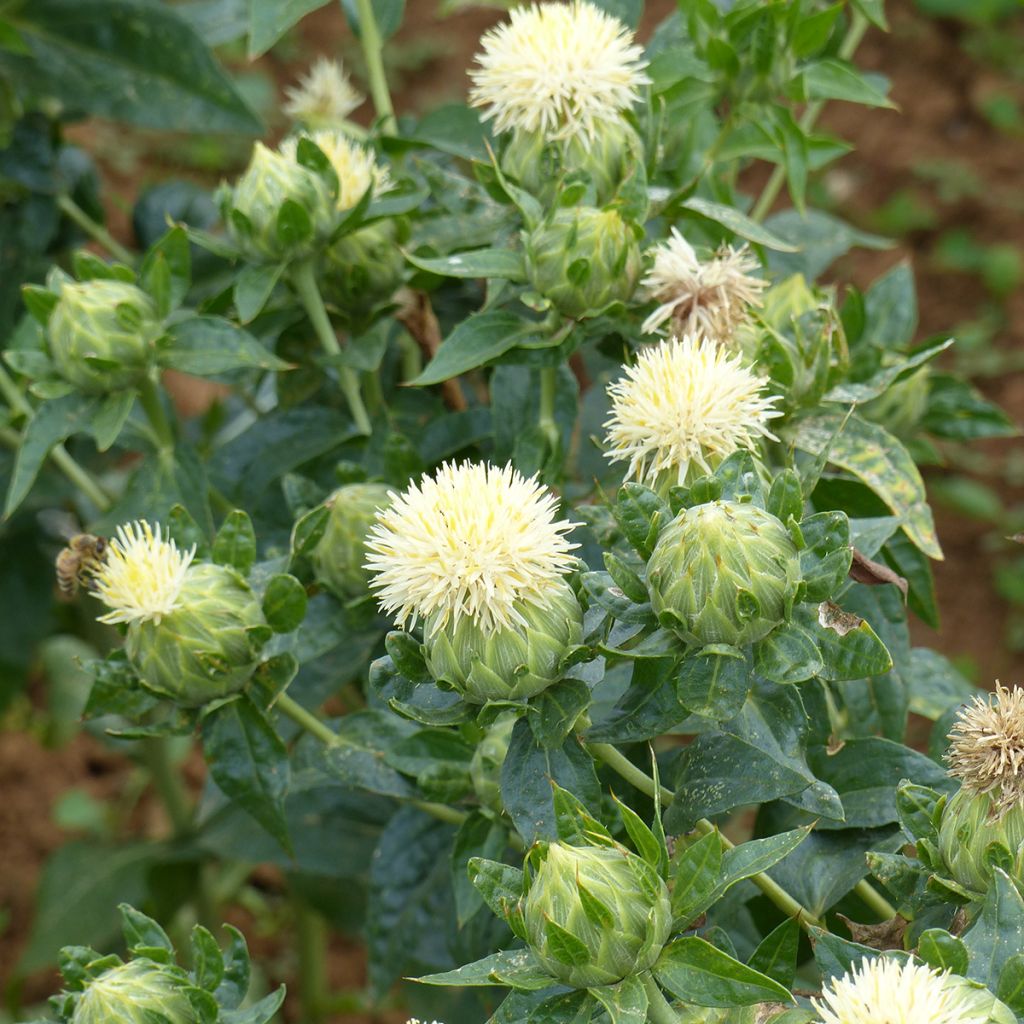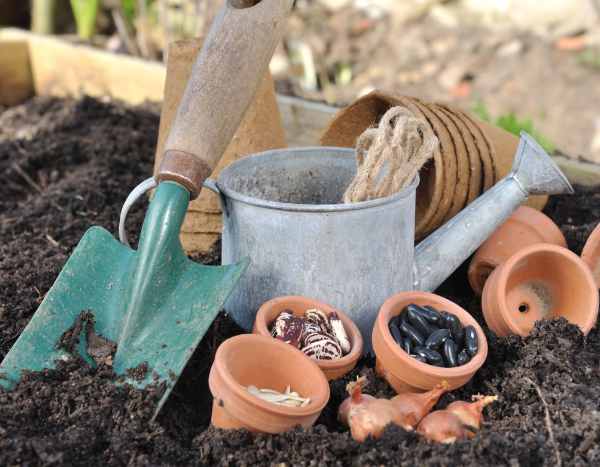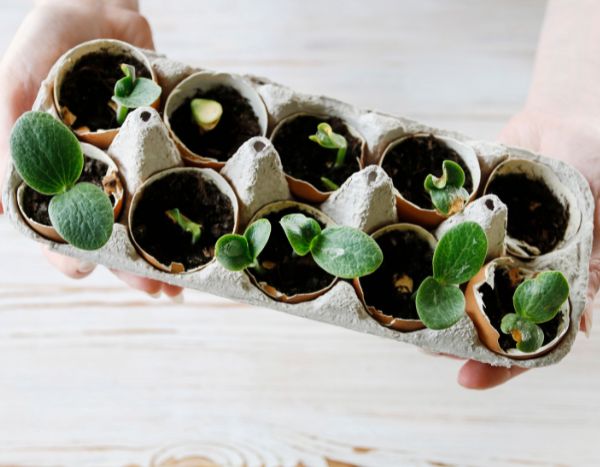

Carthamus tinctorius White Grenade seeds
Carthamus tinctorius White Grenade seeds
Carthamus tinctorius White Grenade
Safflower, False Saffron, Bastard Saffron
Special offer!
Receive a €20 voucher for any order over €90 (excluding delivery costs, credit notes, and plastic-free options)!
1- Add your favorite plants to your cart.
2- Once you have reached €90, confirm your order (you can even choose the delivery date!).
3- As soon as your order is shipped, you will receive an email containing your voucher code, valid for 3 months (90 days).
Your voucher is unique and can only be used once, for any order with a minimum value of €20, excluding delivery costs.
Can be combined with other current offers, non-divisible and non-refundable.
Home or relay delivery (depending on size and destination)
Schedule delivery date,
and select date in basket
This plant carries a 6 months recovery warranty
More information
We guarantee the quality of our plants for a full growing cycle, and will replace at our expense any plant that fails to recover under normal climatic and planting conditions.
Would this plant suit my garden?
Set up your Plantfit profile →
Description
The Carthamus tinctorius 'White Grenade' is a luminous selection of safflower endowed with large creamy-white, original and decorative flowers. The wild species, a beautiful annual once cultivated for its red and yellow pigments as well as its oil-rich seeds, finds here a more ornamental variation. The 'White Grenade' forms a robust clump topped in summer with pale pom-poms perched on tall thorny stems. It is sown in spring under heated cover: it will offer splendid flowers for fresh or dried cut flowers.
Belonging to the Asteraceae family, the Carthamus tinctorius 'White Grenade' is an ornamental cultivar of safflower also known by the vernacular names of false saffron, dyer's saffron or bastard saffron. This cultivar is part of the 'Grenade' series developed specifically for the production of cut flowers, both fresh and dried. This series is recognised for its uniform stems, its slightly or non-thorny leaves and its round heads, adapted for professional cultivation in open fields or under tunnels.
The botanical species Carthamus tinctorius is native to arid regions of the Near East, particularly central and eastern Turkey and Iran. It is only known in cultivation, but it is interfertile with related wild species such as Carthamus persicus, C. oxyacanthus and C. palaestinus.
The safflower 'White Grenade' is a fast-growing annual plant, reaching a height of 80 cm. The plant has an upright habit and sturdy, slightly ramified stems. The leaves are alternate, oval to lanceolate in shape, dark green, with slightly dentate and scarcely thorny margins, which facilitates handling during harvest. Flowering occurs in summer, from July to September, 3 to 4 months after sowing. The globular flower heads measure 2 to 4 cm in diameter. They are formed of tubular florets in a cream to off-white colour. The flowers are mainly pollinated by insects although self-pollination is also possible. The scent of the flowers is subtle. Safflower seeds can be harvested for resowing the following year. Rich in oil, they attract certain birds at the end of the season.
The Carthamus tinctorius 'White Grenade' is suited to well-drained, even poor soil and thrives in dry ground. It requires warmth and dislikes moisture; its foliage is quite susceptible to fungal diseases, and it fears cool, rainy climates. It is cultivated in full sun, in very well-drained soil. Greenhouse cultivation is possible in all regions. It can be transplanted into open ground, in the vegetable garden or in a border, as soon as the risk of frosts has passed. Its cultivation seems better suited to Mediterranean climates as rainfall is generally less frequent there in spring and summer. A large country-style border can be created by combining it with echinops, common yarrow and grasses such as Panicum.
For dried cut flowers: pick the flowers in bud, barely open.
Safflower in cooking:
Roasted seeds can be eaten as an appetiser. Young leaves can be consumed raw, in salads, or steamed.
An ecological asset:
All summer long, the melliferous flowers of safflowers will attract pollinating insects and butterflies to your garden. The oil-rich seeds are particularly appreciated by birds (Parrots, Tits…). At the end of flowering, harvest them to bring joy during the winter scarcity period.
Report an error about the product description
Flowering
Foliage
Plant habit
Botanical data
Carthamus
tinctorius
White Grenade
Asteraceae
Safflower, False Saffron, Bastard Saffron
Carthamus tinctorius 'White Grenade'
Cultivar or hybrid
Planting and care
Sow your Safflower 'White Grenade' under heated cover (20°C) in March-April. Direct sowing in open ground will be possible once frosts have passed, in regions with early springs and sufficiently long growing seasons. Use good quality compost which you should sieve on the surface to properly bind the seed to its substrate. Before sowing, lightly firm the compost using a small board. Sow your seeds by scattering them. Cover the seeds by sprinkling compost or vermiculite over them, lightly firm and water generously with a fine spray. Place your pots in the light, without direct sunlight, at a temperature of 20°C to 25°C.
Seed germination will take between 7 and 21 days. Keep the compost moist, but not excessively so during growth.
By late May or early June, temperatures in the garden will be warm enough to plant out your young plants. Choose a very sunny location. The soil should be loose and well-drained. Space your plants 60 cm apart. Weed if necessary, as safflowers do not like competition from other plants.
Protect your seedlings from snails and slugs as they are particularly fond of these young plants.
Safflower sowing is as easy as sunflower sowing, but its cultivation is more delicate: the plant is sensitive to excess moisture, both at soil level and on the foliage. Once well-rooted, it tolerates lack of water very well.
Sowing period
Intended location
Planting & care advice
This item has not been reviewed yet - be the first to leave a review about it.
Haven't found what you were looking for?
Hardiness is the lowest winter temperature a plant can endure without suffering serious damage or even dying. However, hardiness is affected by location (a sheltered area, such as a patio), protection (winter cover) and soil type (hardiness is improved by well-drained soil).

Photo Sharing Terms & Conditions
In order to encourage gardeners to interact and share their experiences, Promesse de fleurs offers various media enabling content to be uploaded onto its Site - in particular via the ‘Photo sharing’ module.
The User agrees to refrain from:
- Posting any content that is illegal, prejudicial, insulting, racist, inciteful to hatred, revisionist, contrary to public decency, that infringes on privacy or on the privacy rights of third parties, in particular the publicity rights of persons and goods, intellectual property rights, or the right to privacy.
- Submitting content on behalf of a third party;
- Impersonate the identity of a third party and/or publish any personal information about a third party;
In general, the User undertakes to refrain from any unethical behaviour.
All Content (in particular text, comments, files, images, photos, videos, creative works, etc.), which may be subject to property or intellectual property rights, image or other private rights, shall remain the property of the User, subject to the limited rights granted by the terms of the licence granted by Promesse de fleurs as stated below. Users are at liberty to publish or not to publish such Content on the Site, notably via the ‘Photo Sharing’ facility, and accept that this Content shall be made public and freely accessible, notably on the Internet.
Users further acknowledge, undertake to have ,and guarantee that they hold all necessary rights and permissions to publish such material on the Site, in particular with regard to the legislation in force pertaining to any privacy, property, intellectual property, image, or contractual rights, or rights of any other nature. By publishing such Content on the Site, Users acknowledge accepting full liability as publishers of the Content within the meaning of the law, and grant Promesse de fleurs, free of charge, an inclusive, worldwide licence for the said Content for the entire duration of its publication, including all reproduction, representation, up/downloading, displaying, performing, transmission, and storage rights.
Users also grant permission for their name to be linked to the Content and accept that this link may not always be made available.
By engaging in posting material, Users consent to their Content becoming automatically accessible on the Internet, in particular on other sites and/or blogs and/or web pages of the Promesse de fleurs site, including in particular social pages and the Promesse de fleurs catalogue.
Users may secure the removal of entrusted content free of charge by issuing a simple request via our contact form.
The flowering period indicated on our website applies to countries and regions located in USDA zone 8 (France, the United Kingdom, Ireland, the Netherlands, etc.)
It will vary according to where you live:
- In zones 9 to 10 (Italy, Spain, Greece, etc.), flowering will occur about 2 to 4 weeks earlier.
- In zones 6 to 7 (Germany, Poland, Slovenia, and lower mountainous regions), flowering will be delayed by 2 to 3 weeks.
- In zone 5 (Central Europe, Scandinavia), blooming will be delayed by 3 to 5 weeks.
In temperate climates, pruning of spring-flowering shrubs (forsythia, spireas, etc.) should be done just after flowering.
Pruning of summer-flowering shrubs (Indian Lilac, Perovskia, etc.) can be done in winter or spring.
In cold regions as well as with frost-sensitive plants, avoid pruning too early when severe frosts may still occur.
The planting period indicated on our website applies to countries and regions located in USDA zone 8 (France, United Kingdom, Ireland, Netherlands).
It will vary according to where you live:
- In Mediterranean zones (Marseille, Madrid, Milan, etc.), autumn and winter are the best planting periods.
- In continental zones (Strasbourg, Munich, Vienna, etc.), delay planting by 2 to 3 weeks in spring and bring it forward by 2 to 4 weeks in autumn.
- In mountainous regions (the Alps, Pyrenees, Carpathians, etc.), it is best to plant in late spring (May-June) or late summer (August-September).
The harvesting period indicated on our website applies to countries and regions in USDA zone 8 (France, England, Ireland, the Netherlands).
In colder areas (Scandinavia, Poland, Austria...) fruit and vegetable harvests are likely to be delayed by 3-4 weeks.
In warmer areas (Italy, Spain, Greece, etc.), harvesting will probably take place earlier, depending on weather conditions.
The sowing periods indicated on our website apply to countries and regions within USDA Zone 8 (France, UK, Ireland, Netherlands).
In colder areas (Scandinavia, Poland, Austria...), delay any outdoor sowing by 3-4 weeks, or sow under glass.
In warmer climes (Italy, Spain, Greece, etc.), bring outdoor sowing forward by a few weeks.









































